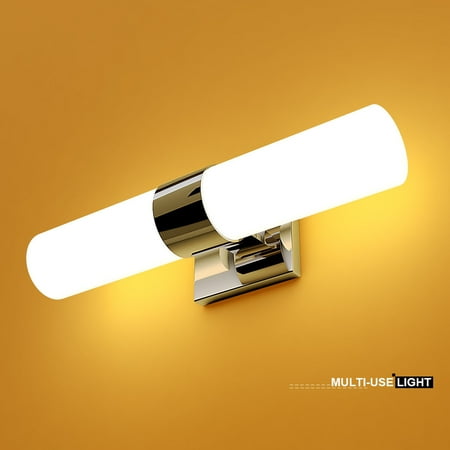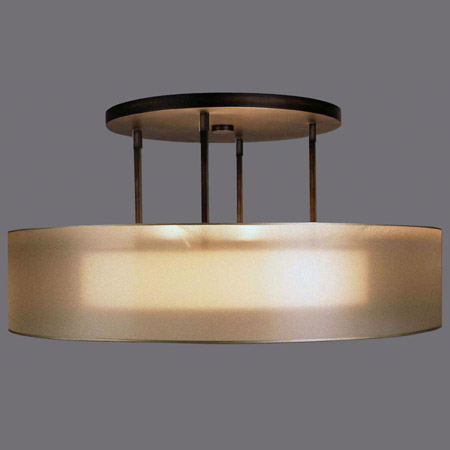The Most Comprehensive Guide To High-End Interior Lighting Lighting is among the most important components of an interior. It does not only provide illumination to a space and make it appear more spacious, but it can also transform its appearance. On the one hand, it can turn a drab room into a glossy-magazine-worthy space with the simple flick of a switch or, on the other, it can under- or over-illuminate resulting in headaches, tired eyes and lighting fatigue. The late, renowned American interior designer Albert Hadley once intimated, "Design is defined by light and shade, and appropriate lighting is enormously significant." This High-End guide to lighting will take you through the many kinds of lighting and give the most effective suggestions for how to design the lighting of your home interior.
Types Of Light First, let's talk about the two primary types of light that everybody should be familiar with lighting: natural and artificial.
1. Natural Light The sun is the best natural light source available. It's mentally stimulating and also totally free. It's difficult to control. The light you receive will depend on the area you live in. The light from the north is likely to be cooler than light from the equatorial sun, and also the direction that your room faces. The amount of sunlight a room receives depends on the season and time of the day. Window coverings can help reduce the amount of natural light. Sara Cosgrove is an interior designer who recommends "sheers, window treatments, and mirrors" for rooms that have less sunlight. Mirrored furniture, like the Carina Bedside Cabinet above, can also be useful and provide storage space. You can control the brightness of rooms that have lots of sunlight by using lined drapes in heavier fabric. It is crucial to tackle the issue of glare. A room that is bright could appear dull and flat. You can limit the sun's brightness and block glare by adding an adjustable window treatment, such as louvers, slats, venetians, roman blinds, or plantation shutters. Combustion light (i.e. candles and firelight) are extremely atmospheric sources of natural light and shouldn't be forgotten. A roaring fireplace makes the chalet reception area look even more welcoming. Statuesque tapers in elegant candlesticks, or candelabra look beautiful set at the top or bottom of a mantlepiece or on the formal dining table. A more casual method to take advantage of candlelight both indoors and outdoors is by using hurricanes, lanterns, and even lanterns.
 2. Artificial Light
2. Artificial Light Artificial lighting is recommended to enhance your space with layers. The most warm option for residential spaces is a warm, rather than simple, clear. As well as adding to the overall design of the space, artificial lighting can be used to highlight particular features, establish zones and alter the size of rooms. When designing your lighting scheme be sure to consider the following five categories of lighting. Think about where you you need what, how you will use your space and employ a range of lighting effects to create the look you want.
Here Are 5 Types Of Interior Light The five major types of interior lighting are: general (ambient, mood), accent, task (task) and accent. There are many types of lights that could be used in lighting for interiors. However, it is possible to combine several lights into one type. It is crucial to be aware of the differentiators between the different types of lighting so you can design a suitable scheme.
A. General Lighting General lighting is at the heart of every lighting scheme. It gives a consistent light that covers the entire space and serves a practical reason, rather than being a decoration. The primary feature of general lighting which is typically direct the fact that it has to be controlled with an adjustable dimmer that can compensate for variations in light. The central light source, which is the primary source of all lighting, is a key element in the style of the room. A stylish or expensive chandelier can make a great visual impact in a room and draw the eye. However, they must be complemented and supported with other lighting layers. A single lighting source can cast stark shadows (especially for those with eyes) which could make a space appear drab. A lighting scheme that is too basic to make a space inviting is considered insufficient. See the top
Koncept options.
 B. Accent Lighting
B. Accent Lighting Like task lighting, accent lighting serves a distinct function and refers to lighting that is specifically designed to highlight a particular feature in a space. Accent lighting highlights artwork, sculptures, and objets placed on pedestals or in cabinets are some examples. They enhance the pieces and help to prevent them from being obscured in spaces that are not well-lit. Like task lighting, because of its nature, accent lighting needs more lumens (the lighting output)--at least three times as much--and therefore requires a higher wattage. Ambient lighting can be used as accent lighting. Accent lighting is not likely to be as subtle as ambient lighting, but emphasizes textures and defines the edges of an object. See the recommended
Foscarini review.
C. Ambient Lighting Ambient lighting is the next step of lighting, and is a great complement to general lighting. Both types share important characteristics--they're primarily functional and used to light a complete area. The direction of the light is the main differentiator. Interior designer April Russell explains the difference by saying "General lighting is just that -- practical light for every day and night usage. Ambience lighting is linked to an adjustable dimming system that lets you set the suitable levels of light for any event. Ambience lighting is generally employed for entertainment purposes, as it creates dramatic effects." Ambient lighting can be indirect, and consequently less sombre than normal lighting because it does not typically use downlighting, it doesn't create shadows that aren't flattering. You can, for instance, make use of eyeball spotlights to light walls, concealed coffer lighting and backlit Perspex panelling that shines lighting onto ceilings. This ambient lighting can be considered an example of architectural light that can be used to change the look and dimension of an area. The room will feel confined and dark without it. See the recommended
Asteria specialist.
 D. Task Lighting
D. Task Lighting Its name suggests that it is a light source which is used to perform specific tasks, such as cooking or reading. They must be equipped with a higher wattage than other lighting. For eye strain, avoid using these lights with ambient lighting. The home office of Elicyon offers an excellent illustration of a task-lighting space that's needed. Balanced-arm lamps make great desk designs, while flexible reading lamps that are placed near a headboard are great to read at night. Mirror lighting is ideal for personal grooming and bathrooms. The kitchen is another place in which task lighting should be incorporated in order to make food preparation simpler and safer. There are many options available for kitchen task lighting. Task lights can also be used for creating pathways for foot traffic in a room or hallway. See the most popular
kepler light brands.
E. Mood Lighting The lighting of mood is equally important to a room's appearance as general and ambient lighting. Without it, the room would be empty. By creating light pools that block shadows that are caused by the general lighting, it helps make an area feel more comfortable. It's also an important aspect of a room’s interior design. It is equally focused on style and purpose. For table lamps, a solid side table or console is recommended as it will be difficult to hide the wires. The wires can be attached to the surface by drilling a small hole, or by using stapleing them to the leg. It is a good idea to keep your plug sockets near the place where your lamps are placed. Because mood lighting is usually the light source closest to eye level It's essential to reduce any unwanted glare from empty bulbs using filters. Your general or ambient lighting should be shaded when it can be seen below the bulb.
In Conclusion
Casa Di Luce There are a myriad of options to choose from high-end lighting. Before you decide on a lighting option be sure to make sure you ask these tips above. CasaDiLuce.ca has a range of light fixtures to aid you in creating the ideal environment. You want to find out more? There's CasaDiLuce.ca online where you can shop for lighting products in Toronto.



